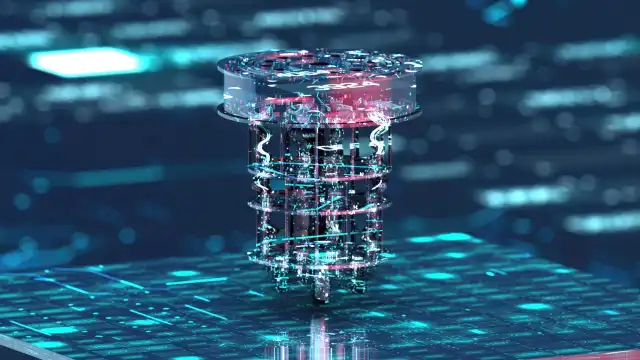At its heart, a qubit is not just a 0 or a 1. It can exist in a state of superposition, a mixture of both 0 and 1 at the same time. You can think of a superposition as a list of all possible states a qubit could be in, each with a certain probability. This allows a single qubit to represent vast amounts of information simultaneously.
Table of Contents
Instead of having a definite value like a classical bit, a qubit holds a collection of potential outcomes. This concept of existing in multiple states at once is central to how quantum algorithms achieve their unique power.
🔗 Entanglement: The Ultimate Connection
Perhaps the strangest of the four properties is entanglement. This is a special link between two or more quantum objects, such as qubits. Once entangled, these particles are linked in such a way that the state of one instantly affects the state of the other, no matter how far apart they are.
If you measure one entangled qubit and find it to be a 0, you instantly know that its partner has collapsed into a definite state as well. This immediate connection defies our conventional understanding of space and time, but it has been experimentally confirmed countless times. It’s a core component of many quantum algorithms, including teleportation.
🤼♂️ Interference: Amplitudes and Their Interactions
Every state in a superposition has an associated value called an amplitude, which is used to determine the probability of observing that state upon measurement. These amplitudes can be positive or negative numbers. When two amplitudes are combined, we call this process interference.
If the result is a new, larger amplitude, it’s called constructive interference. Conversely, if they cancel each other out, it’s called destructive interference. By carefully engineering algorithms to control interference, we can increase the amplitudes of the states we want to measure and decrease the amplitudes of all the others. This is one of the key tricks in quantum programming.
🔭 Measurement: From Potential to Reality
The final pillar is measurement, which forces a qubit to choose a definite state. When you measure a qubit in a superposition, it instantly collapses into a single classical state of either 0 or 1. The key is that this outcome is fundamentally probabilistic. You can’t predict with certainty what you will get, only the probability of getting each possible result. The act of measurement is what bridges the strange quantum world with our familiar classical world, giving us the binary output we can finally use to solve problems.
—
Glassner, Andrew. Quantum Computing: From Concepts to Code. No Starch Press, 2025.
- The Quantum Threat: How Shor’s Algorithm Puts Modern Encryption at Risk
- Cracking the Code: How Quantum Parallelism Solves Deutsch’s Problem in One Step
- The Deutsch-Jozsa Algorithm: An Exponential Leap in Quantum Problem Solving
- The Bernstein-Vazirani Algorithm: Unmasking a Secret With a Single Query
- Simon’s Algorithm: The First Quantum Speedup That Left Classical Computers in the Dust
- The Quantum Enigma: Why Measurement is the Most Unpredictable Step
- Can You Teleport a Qubit? The Amazing Alice & Bob Experiment
